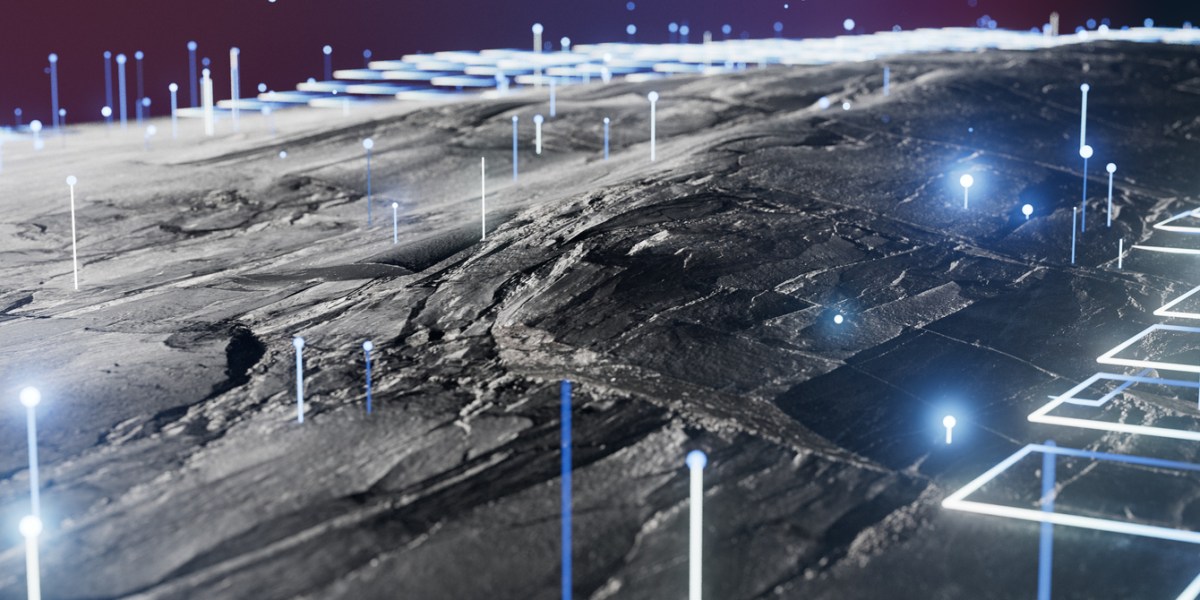Nokia’s ‘network in a box’ (NIB) was delivered to the Moon’s surface in March attached to the Intuitive
Machines’ Athena lunar lander.
And there, in an area of the lunar highlands called Mons Mouton, the network powered up. For 25 minutes, the
rigorously adapted 4G/LTE system, about the size of a small pizza box, was functional, receiving and
transmitting operational data to Nokia’s mission control center nearly 400,000km away.
“We’ve achieved some major objectives. We’ve built a network which survived launch and landing. It survived
transit to the Moon.”
Dr. Thierry Klein, President, Bell Labs Solutions Research, Nokia Bell Labs
Signal noise with the laser altimeter and issues with the optical sensors aboard Intuitive Machines’ Athena
caused the lander to end up on its side, and left a planned cellular call — establishing a wireless link
between the NIB and the rover and hopper on board—unworkable. But for the engineering team behind the
innovation, the mission achieved significant goals in advancing the readiness level of cellular technology and
validated years of painstaking work.
“From the network’s perspective, we’ve achieved some major objectives,” says Dr. Thierry Klein, president of
Bell Labs Solutions Research at Nokia. “We’ve built a network which survived launch and landing. It survived
transit to the Moon. That’s no small feat because we’ve taken commercial technologies and built this NIB to
survive the mechanical stresses of a rocket launch, traversing the Van Allen radiation belts and then landing.
We’ve then managed to turn the NIB on, send commands and receive telemetry data back from the network. So, we
know that our NIB was fully operational and ready to establish connections.”
And that marks a major leap forward in the creation of a cellular network set to be instrumental to the
success of a projected multi-trillion-dollar space economy.
By 2035, the Moon could be full of activity and industry.
There may be astronauts living and working in permanent habitats; fleets of robotic vehicles circumnavigating
craters and asteroid boulders; research teams conducting scientific experiments and manufacturing advanced
materials; industrial teams drilling and mining for resources and erecting sensor grids designed to power
local economic activities. There could even be railroads ferrying cargo, power generators, and minerals
harvested from lunar soil.
In fact, the entire space economy is expected to be as high as $1.8 trillion by 2035. And while lunar
activities are only a small chunk of this, they will only be sustainable with a modern cellular communications
network designed to withstand the rigors of space.
Until now, radio communications, which require a clear line of sight between two antennas and use ultra-high
frequency radios, have been relied upon to connect, say, astronauts on the surface of the Moon or a lunar
lander with Earth. When Neil Armstrong and Buzz Aldrin stepped onto the Moon in 1969 they used a radio system
called an S-Band, which used a lightweight umbrella-like antenna on the lunar lander to reflect signals over a
vast distance. But with far more devices soon to populate the Moon’s surface, and more advanced
bandwidth-intensive and latency-sensitive applications, these technologies will fall short.
As Klein outlines, there are multiple scenarios in which cellular connectivity that enables better range,
more devices, and higher data transfer speeds will form the bedrock for safe, effective space exploration. For
one, astronauts’ work will need to be augmented by myriad robotic and autonomous systems—be it in drilling,
mining, or harvesting for food—and each of these will need to coordinate and communicate with one another to
align on tasks.
“Everything that we want to do, from scientific exploration to creating an established permanent presence on the
lunar surface with an operating lunar economy, requires advanced communication capabilities.”
Dr. Thierry Klein, President, Bell Labs Solutions Research, Nokia Bell Labs
Mission control teams will also need to use a surface network for astronauts to collect data that can then be
transmitted back to Earth to ensure the safety of a growing number of astronauts—for example, analyzing
biometric data in near real-time or tracking their location on the lunar surface to identify hazards. And the
availability of high resolution, real-time audio and visual feeds on the surface of the Moon will enable those
same teams to have access to data and video that will guide astronaut operations, flagging areas of scientific
interest or overseeing tasks from a vast distance.
“Everything that we want to do, from scientific exploration all the way to creating an established permanent
presence on the lunar surface with an operating lunar economy, all of that requires advanced communication
capabilities, whether it’s voice, video, data, telemetry data, biometric data, or scientific data,” explains
Klein.

